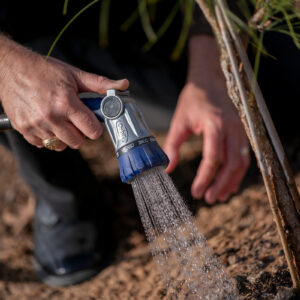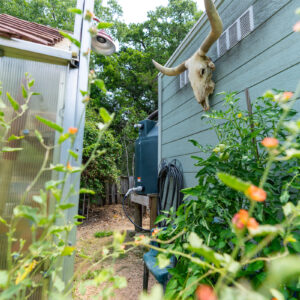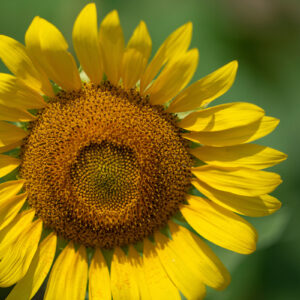Crop production practices may enhance or suppress survival, abundance, and severity of damage of sorghum insect pests. These practices can be used to avoid conditions that favor insect pests or activate conditions detrimental to an increase in insect pest abundance or damage.
Crop termination and alternate host elimination
Crop termination and alternate host elimination are cultural management methods that increase mortality of insect pests and decrease subsequent damage through destruction of food sources and overwintering habitats. Destroying the crop soon after harvest and eliminating volunteer sorghum plants suppresses insect pest abundance the following year. Destroying alternate host plants eliminates sources of insect pests that infest sorghum. Tillage methods for sorghum vary regionally and have evolved from plowing with a moldboard plow, followed by several secondary tillage operations, to much reduced tillage. The trend is toward combining secondary tillage and planting into one trip over the field. Whatever tillage is used, sorghum stalks should be destroyed soon after harvest to expose and kill insect pests and eliminate their food supply. It is equally important to destroy volunteer sorghum and alternate host plants that harbor insect pests. Herbicides can be used to kill sorghum and alternate host plants where reduced tillage is used. However, failure to destroy overwintering sites mechanically may contribute to an increase in the survival of certain insect pests.
Destroying food sources and overwintering habitats reduce abundance of cutworms; sorghum midge; sorghum webworm, Nola sorghiella Riley; sugarcane borer, Diatraea saccharalis (Fabricius); and sugarcane rootstock weevil, Anacentrinus deplanatus (Casey). Johnsongrass, S. halepense (L.) Pers., is a noncultivated host of many sorghum insect pests, including yellow sugarcane aphid, Sipha flava (Forbes); greenbug; and sorghum midge. Destroying this weed is difficult but highly beneficial to efficient sorghum insect pest management and crop production.
Crop rotation
Crop rotation is a cultural management method that involves alternate use of host and nonhost crops in a field to reduce insect pest abundance and damage. Sorghum benefits most when rotated with a broadleaf or taprooted crop such as cotton, Gossypium hirsutum L., or soybean, Glycine max (L.) Merr. Growing sorghum in a field planted to a different, nonhost crop the previous year significantly reduces the abundance of some insect pests, as well as some diseases and weeds.
Crop rotation is most effective against insect pests with a limited host range, long life cycle (one or fewer generations a year), and limited ability to move from one field to another. For example, several species of wireworms, white grubs, and some cutworms have only one generation a year, must have a grass-type crop on which to develop and reproduce, and because they live underground cannot during the damaging larval stage move from one field to another. Thus, growing a nongrass crop such as cotton or soybean the year before growing sorghum reduces abundance of soil-inhabiting insect pests in sorghum fields. Sorghum should be rotated annually with other crops.
Variety selection, seedbed preparation, and seed treatment
Variety selection, seedbed preparation, and seed treatment are important for managing sorghum insect pests. Only sorghum varieties with seed germination of eighty percent or greater should be used. Poor seed germination results in reduced stands and less competitive plants more susceptible to damage by insects. A sorghum variety adapted to the locale, and preferably one least vulnerable to insect pests and diseases, should be used. Sorghum hybrids selected should be resistant to greenbug. Sorghum midge-resistant hybrids, if available, are useful in more southern regions of the United States. Larvae of corn earworm; fall armyworm, Spodoptera frugiperda (J. E. Smith); and sorghum webworm that consume developing kernels infest sorghum hybrids with open panicles less than those with compact panicles. Also, kernels of open-panicle sorghum varieties are less likely to deteriorate from the combined effects of weather and damage by panicle-infesting bugs and pathogens. Sorghum varieties should be selected that mature as early and uniformly as practical in a locale. These varieties escape infestation by sorghum midge, corn earworm, fall armyworm, sorghum webworm, and sugarcane borer.
Sorghum varieties resistant to pathogens and lodging also lessen detrimental effects from insect pests. Insect pests stress sorghum plants, and this stress combined with pathogen infection increases the chance of plant lodging. Greenbug and corn leaf aphid, Rhopalosiphum maidis (Fitch), transmit maize dwarf mosaic virus to sorghum. This problem is best dealt with by using virus-resistant varieties. Iron-tolerant sorghum varieties should be used in areas where iron deficiency is a problem.
Well-prepared seedbeds speed seed germination and seedling growth. The trend in planting sorghum is less tillage and fewer trips over the field using appropriate planting equipment. Tillage for seedbed preparation should modify the soil to allow desired control of seed placement, weeds, water infiltration, water evaporation, and erosion.
Rapid seed germination is essential to avoiding damage by seed-feeding insects such as wireworms and red imported fire ant, Solenopsis invicta Buren. Rapidly growing and larger plants better tolerate damage by yellow sugarcane aphid, greenbug, and chinch bug, Blissus leucopterus leucopterus (Say).
Insecticide can be used to protect planted seed from insect pests. Recently, sorghum seed treated commercially with a systemic insecticide is available to protect against seed-feeding insects and some seedling insect pests. Also, insecticides can be applied to seed in the planter box or in-furrow at planting. Systemic in-furrow insecticide protects seedling sorghum against some insect pests. Insects controlled by systemic seed or in-furrow treatment include wireworms, red imported fire ant, cutworms, southern corn rootworm, Diabrotica undecimpunctata howardi Barber, aphids, and chinch bug.
Planting time
Planting time of sorghum in most locales should be as early as practical but not when soil is too cool for rapid seed germination and seedling growth. In many areas, early planting takes advantage of seasonal rainfall. Planting early avoids infestation and damage because the sorghum plant is beyond the vulnerable stage when some insect pests are abundant enough to cause damage, or at the very least, the crop is susceptible for a shorter period of time.
Early and uniform planting of sorghum to avoid a damaging sorghum midge infestation is an excellent example of the benefit of planting early. Planting sorghum early avoids high numbers of corn earworm, fall armyworm, sorghum webworm, stalk borers, and panicle-feeding bugs.
Fertilizer and water
Fertilizer and water applied to sorghum either can be beneficial or detrimental to insect pests. Using too much fertilizer and irrigation can cause sorghum plants to be especially succulent and attractive to insect pests, and may extend the time to maturity, increasing the duration of vulnerability. On the other hand, healthy, vigorously growing sorghum plants better tolerate insect pest infestation and other stresses. Chinch bug and Banks grass mite are favored by hot, dry conditions and moisture-stressed plants. Yield of healthy plants is less reduced by most leaf-feeding insect pests. In some areas, application of iron is important for production of healthy sorghum plants.




